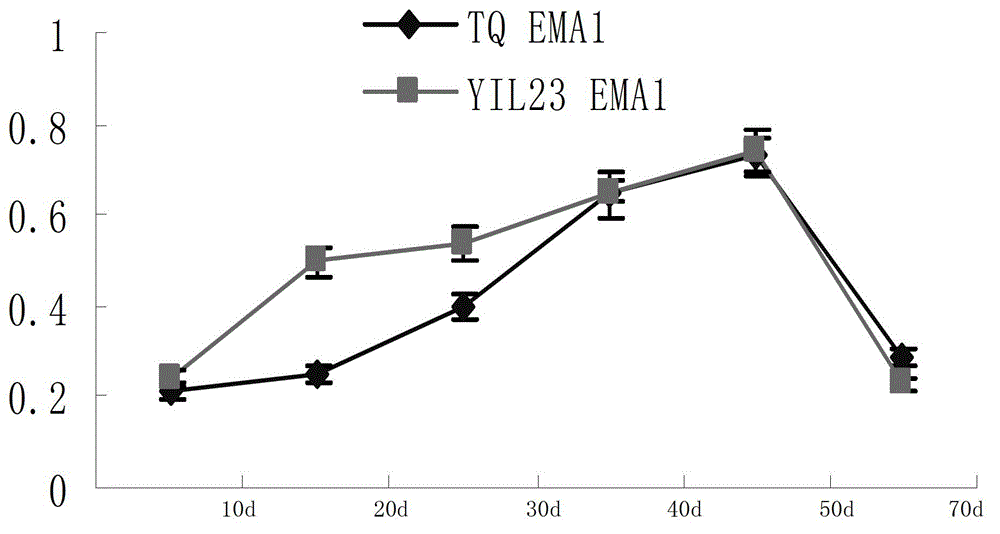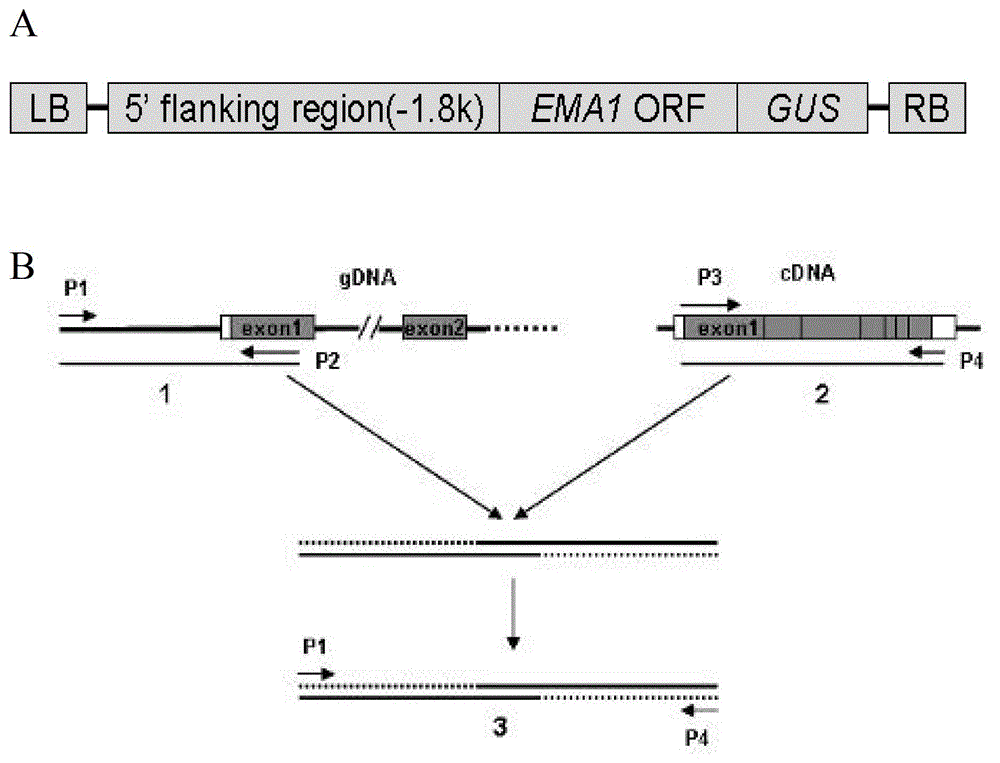Newborn tissue-specific promoter p-ema1 in rice and its application
A technology of recombinant vectors and recombinant plasmids, applied in the fields of application, recombinant DNA technology, angiosperms/flowering plants, etc., can solve problems such as genetic bottlenecks, and achieve broad application and market prospects
- Summary
- Abstract
- Description
- Claims
- Application Information
AI Technical Summary
Problems solved by technology
Method used
Image
Examples
Embodiment 1
[0029] Example 1, Discovery of rice neonatal tissue-specific promoter p-EMA1
[0030] 1. Discovery of the EMA1 gene
[0031] An early-maturing introgression line YIL23 was isolated from an introgression line population constructed with Orzya rufipogon Griff. as a donor parent and an indica rice variety Teqing (Oryza sativa ssp. About 28 days after heading, the early-maturing gene EMA1 was cloned by map-based cloning strategy. Analysis of the expression of the EMA1 gene in the parents showed that the expression of the EMA1 gene in the leaves gradually increased at the seedling stage and decreased rapidly after reaching the apex, but the expression of the EMA1 gene increased faster in the introgression line YIL23 than in Teqing ( See figure 1 , TQ stands for Teqing, YIL23 stands for the precocious introgression line YIL23). That is, at the seedling stage, the expression of EMA1 in the introgression line YIL23 was stronger than that in the green, and as the seedlings grew up, ...
Embodiment 2
[0035] Embodiment 2, the acquisition and identification of p-EMA1 transgenic rice
[0036] 1. Construction of plant expression vectors
[0037] 1. Synthesize the double-stranded DNA molecule shown in sequence 1 of the sequence listing.
[0038]2. Using the double-stranded DNA molecule synthesized in step 1 as a template, perform PCR amplification with a primer pair composed of P1 and P4 to obtain a PCR amplification product.
[0039] P1: 5'-AT GGATCC ATCACCGCAAATACTTCTCCC-3';
[0040] P4: 5'-GC AAGCTT ACGCAGAGATCCAGCTTATTCC-3'.
[0041] In P1, the underlined base is the recognition site of the restriction endonuclease BamHI;
[0042] In P4, the underlined base is the recognition site of the restriction endonuclease HindIII.
[0043] 3. Digest the PCR amplified product in step 2 with restriction endonucleases BamHI and HindIII, and recover the digested product.
[0044] 3. The plant expression vector pCambia1381 was double digested with restriction endonucleases BamH...
PUM
 Login to View More
Login to View More Abstract
Description
Claims
Application Information
 Login to View More
Login to View More - R&D
- Intellectual Property
- Life Sciences
- Materials
- Tech Scout
- Unparalleled Data Quality
- Higher Quality Content
- 60% Fewer Hallucinations
Browse by: Latest US Patents, China's latest patents, Technical Efficacy Thesaurus, Application Domain, Technology Topic, Popular Technical Reports.
© 2025 PatSnap. All rights reserved.Legal|Privacy policy|Modern Slavery Act Transparency Statement|Sitemap|About US| Contact US: help@patsnap.com



